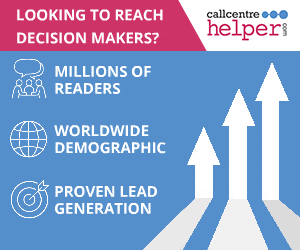Many contact centres struggle to match their forecasts to actual call arrival patterns – often because of how data is broken down and analysed.
In this instalment of our video series on the key concepts behind accurate forecasting, Call Centre Helper’s Jonty Pearce explains daily profiles and reporting intervals.
Getting this right is essential for converting long-term forecasts into real-time staffing plans.
Video: Forecasting Fundamentals: Daily Profiles and Reporting Intervals
Watch the video below to hear Jonty explain what you need to know about forecasting – focussing on daily profiles and reporting intervals:
From Weekly to Daily Staffing
Once you’ve built a forecast model using seasonality data and removed any long-term trends, you’ll typically generate a weekly staffing requirement.
To turn that into a workable schedule, you need to apply a daily or even hourly profile. This helps you understand how call volumes will be spread throughout the week – and how many people you’ll need at any given time.
“Once you’ve got your seasonality data and you’ve de-trended and de-seasonalized it, and built your model, then once you’ve got a weekly staffing requirement, you need to try and put on some sort of daily, or weekly, profile to the data to generate your staffing requirements. There’s lots of articles on Call Centre Helper about how to do that.”
However, one detail that often gets missed is how calls tend to bunch up at certain times of day.
Call Bunching Around the Hour
Human behaviour plays a big role in call arrival patterns. People often make calls at the start of the hour or shortly after. For example, they might call just before starting work, just after logging in, or at the beginning of a lunch break.
These activities are usually scheduled around the hour, which leads to spikes in demand at predictable times.
“One of the things a lot of people tend to forget is that call arrivals tend to bunch up around the hour.
This is sort of human behaviour, and what you typically find is something like 40% of overall traffic tends to happen in the first 15 minutes of the hour, about 30% in the last quarter of the hour, and the remainder tends to happen between these periods.
And if you think why is that?
We live in a world where a lot of things are scheduled around the hour, so you get to work, and you’re scheduled to be at work at 9:00. So, you’ll make a call to the call centre just before you get to work, or just after you’ve got to work.
You have your lunch break – you might be calling the call centre at the beginning of your lunch break, and those tend to be scheduled on the hour.
So, you tend to get a lot of stuff bunched up. People go to a meeting. I’ll make a call to the contact centre before the meeting.”
Typically, around 40% of call traffic arrives in the first 15 minutes of each hour. Another 30% comes in the final 15 minutes, with the rest falling in between.
Ignoring these peaks can result in poor staffing decisions, as they don’t show up in models that use wider time blocks.
Why 15-Minute Reporting Helps
To reflect real demand patterns, it’s best to report on a 15-minute basis. This allows you to track short-term spikes and adjust staffing in closer alignment with actual call behaviour.
However, there’s an important factor to consider: overhang. This happens when longer calls stretch from one reporting interval into the next.
For example, a call that starts at 9:14 and lasts 25 minutes will continue into the next two intervals, making it harder to judge call load accurately.
“One of the things you’ve got to look at is that in terms of how you look at your reporting intervals, it’s much better if you can report on a 15-minute basis.
So, you break your call volumes, or contact volumes, down by 15 minutes. Now there is one thing you’ve got to be careful of, and it’s something called overhang.
If your average call duration, for instance, is, say, 25 minutes, you know if you had a very long technical type of call, then what you’d find is you’ve got effectively calls going on from one period carrying on into the next period, and that will tend to distort your staffing calculations.”
Balancing Reporting with AHT
To reduce the impact of overhang, your average handling time (AHT) should not be more than half the length of your reporting interval, as Jonty explains:
“A good rule of thumb is that your average handling time should not exceed 50% of the reporting period.
So, if your average handling time is 7 and a half minutes, or more, then the 15-minute model won’t work so well, and you probably ought to be working on a half-hour basis.
There may also be some limitations that your ACD or CCaaS system runs on a half-hour output, in which case you need to use that.”
If AHT is over 7.5 minutes, 15-minute intervals may not provide accurate enough data. In those cases, it’s better to work with 30-minute blocks instead.
You’ll also need to check what your ACD or CCaaS system allows, as some platforms only offer reporting in half-hour chunks, which may limit your options.
Why It Matters
Daily profiles and reporting intervals are essential tools in workforce planning. Getting the timing wrong — even by 15 minutes — can lead to under- or over-staffing.
By understanding when people actually make contact and aligning your reporting with real behaviour, you can create more accurate forecasts and better manage demand throughout the day.
If you are looking for more great insights from Jonty, check out these next:
- Understanding the AHT Glidepath to Track Agent Onboarding
- Getting Started With Forecasting
- How Accurate is Your Forecasting?
- The Erlang C Formula
Author: Jonty Pearce
Reviewed by: Robyn Coppell
Published On: 4th Jun 2024 - Last modified: 12th Jun 2025
Read more about - Video, Forecasting, Top Story, Videos















